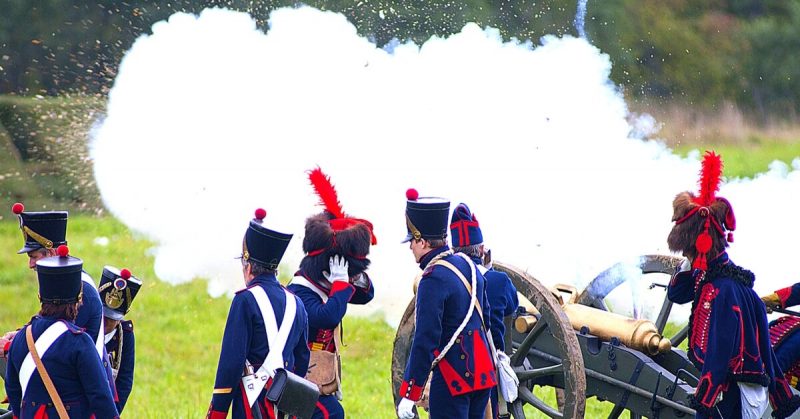In 1812 Napoleon Bonaparte, Emperor of the French, dominated Europe. The only power that stood in the way of total domination was Russia, ruled by Tsar Alexander I. Napoleon, therefore, decided to invade Russia with 680,000 men, known in history as the Grand Armee, the largest army the world had ever seen.
The French and Russians met at the village of Borodino, near Moscow, on September 7, 1812. About 250,000 men were involved. Napoleon wanted to capture Moscow. If he defeated the Russians and captured Moscow, he could force Alexander to make peace.
The Russian troops assumed defensive positions. The French attacked, forcing the Russians from their positions but failing to break them. The Russians withdrew from the field the following day, but Napoleon had failed to defeat them.
By the end of the day around 70,000 were killed or wounded, making it one of the bloodiest battles of the Napoleonic Wars. Both the Russians and the French lost about a third of their armies.
Alexander’s forces had not been defeated. Nevertheless, Napoleon continued toward Moscow. He succeeded in seizing Moscow, but without a fight. All the while he expected to meet the Russian army but it never came.
Napoleon found Moscow deserted and his army could not find supplies. The rigors of the Russian Winter forced the French to retreat from Russia, harassed on the way by the Russians.
By the time the French Army left Russia, only 120,000 troops remained from the Grande Armee that fought at Borodino. More recent archaeological evidence has shown that many of the French Soldiers died of exposure and starvation.
Some historians believe that Napoleon might have defeated the Russians at Borodino if he had pursued the Russians harder. Others say that he might have won if he had sent his Imperial Guard into battle. The soldiers of the Imperial Guard were Napoleon’s elite troops, but they did nothing during the battle.
This footage, taken by a drone, shows a reenactment of the battle near the site where it actually took place. The men are dressed in the uniforms of the time. Infantry and cavalry crossed swords and shot cannons for over two hours.
https://www.youtube.com/watch?v=EMtyxJDthX0
